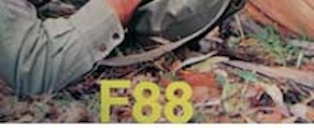The Enfield Rifle Musket
The Enfield muskets were used extensively during the American Civil War.
Click on the expanded menu on in the left hand column to learn more about the various models.
The American Southern Contract
English Enfield pattern muskets were both the most widely issued and well liked of all the imported arms used by both sides in the War for Southern Independence. Greener and Pritchett developed the expanding ball rifle musket to an unheard-of performance level while working at Enfield Lock, England in the early 1850's. This work led directly to the P-53 Rifle Musket and its later variants. Introduced in 1853, it was arguably the best infantry weapon of the time.
Success begets imitation and this was true for the P-53. U.S. ordinance experts studied the English gun when developing the models of 1855. Many features of the Enfield are to be found in our Springfields. Others took a more direct approach, they simply copied the P-53. The Liege gun making complex in Belgium thrived on meeting the considerable international demand for Enfield knockoffs.
With the outbreak of Civil War in America, the new southern Confederacy realized that it could not meet its Army's requirement for modern weapons. Even after the capture of Harpers Ferry, Southern arms manufacturing capacity was woefully inadequate. The new Confederate government lost no time in dispatching an agent to Europe. The person selected was West Point educated, Massachusetts born, Caleb Huse. The choice could not have been better. His instructions were to quickly obtain serviceable weapons wherever he could find them and secure a supply of the most modern small arms, i.e. Enfields. In order to facilitate this work, he was provided with a tremendously favorable letter of credit from Fraser, Trenholm & Company of Liverpool, part of the Trenholm banking empire. (This institution's rather colorful president, John Trenholm, of Charleston, South Carolina, was one of the inspirations for Margaret Mitchell's Rhett Butler.)
Huse reached Europe before most Federal arms purchasing agents had even left American shores. There he bought up a huge supply of reasonably modern weapons from several countries. By far his greatest coup though was a Confederate contract with the London Armoury Company. As much as the South wanted to get weapons from Enfield Lock, the English equivalent of Springfield Armory, this was not to be. In order for the British government to supply arms, they would have to give up their neutrality and recognize the Confederate government, which was not about to happen, at least not so early in the war. The Brits could however assist in obtaining a contract with one of their leading suppliers. This contract stipulated the delivery of machine made, parts interchangeable, three band Enfield Rifle Muskets. The parts interchangeable clause was the key. It required the highest quality work. It also allowed for easy repair in the field, especially given that the Confederate Quartermaster's Department would not be returning weapons to England for repairs.
For several years U.S. armories had been making guns so alike that parts from Springfield would fit Harpers Ferry guns. However, Enfield pattern arms that were not specifically required to meet the British government gauges were usually not parts interchangeable. They just looked like the Tower Enfields made for the Crown. These were much the same as Whitney's "good and serviceable arms", many of which appeared to be regulation Springfields, but weren't. The locks of these "Enfields" were often marked just like English Government gauged guns with "TOWER" and the Crown, and often even bogus inspection gauge stamps. This was done to dupe gullible foreign buyers into thinking they were getting high quality gauged guns. As long as the fraudulently marked guns were being exported, the London government didn't care. Huse however was anything but gullible. While he would purchase them, if the price was right, his aim was the Number 1 Enfield in quantity.
The London Armoury Company was not only a manufactory but also controlled a consortium of small shops. With the Confederate order, almost all of the better quality contractors in London were committed to the southern cause. The Armory had to finish up a British contract and a small order from the State of Massachusetts before starting on the Southern order. By late 1861, London Armoury guns were being shipped to the Confederacy. It is often reported that all L.A.Co. muskets produced after the Huse contract were sent to the Confederacy. This isn't true. The company continued to supply the Crown, but shipped all their excess production to the southern states. Most of their 1863 output was destined to run the blockade. Almost all of the 1864 production went to the South, and even a portion of 1865's.
Late in 1863, the US government suddenly canceled all their contracts with English makers, most of which were in Birmingham. The South took advantage of this. They quickly contracted with the "Birmingham Small Arms Trade" association for large quantities of "Number 2, Hand Made" Enfields. These were nowhere near the quality of London Armoury's muskets, but their addition to the Southern arms supply was most fortuitous.
The guns produced on Huse's London Armoury contract were of the highest quality. Interestingly, just before the outbreak of the war, the company had taken delivery of the latest stock making equipment from the Ames Manufacturing Company in Massachusetts. The rest of their equipment was equally up to date. Parts were gauged with English government gauges and fit up to the best military standards. Once inspected, probably by British government inspectors on Confederate contract, they were loaded on fast blockade runners, many of which were also made in England, for the trip across "the pond". Surprisingly, most arrived in southern ports. The life expectancy of the average blockade runner was about six trips before being captured or sunk.
The war was not kind to the London Armoury Company. Most of the pay on their Confederate contracts was in cotton bonds, deliverable at some future date. These bonds were widely traded on European commodities markets, and were generally as good as gold, up until early 1865. With the downfall of the Confederacy, they became worthless. London Armoury held millions of dollars of them. It was more than the company could absorb, and the doors closed on the first private contractor in England to build parts interchangeable products.
The southern L.A.Co. Enfield is not only well made, but one of the best finished arms to see service in the Civil War. Stocks were either a light colored walnut or beech, stained reddish brown and oil finished, or first quality Italian Walnut. Buttplates, trigger assemblies and nose caps were polished brass. Locks and hammers were color casehardened while barrels and barrel bands were "blackened" to a beautiful deep blue. Unfortunately, it was very common for soldiers polish the barrels bright. Unlike many Enfield contractors, London Armoury plainly marked their locks "L. A. Co.", not the bogus "TOWER".
Of the tens of thousands of muskets imported, not too many London Armoury Enfields have survived. Being first quality, most could easily be sold back to Europe. After the fall of the South, over 100,000 Enfields were repaired and refinished at Springfield, then sold off to help pay the crushing war debt of the federal government. Today they are a prized addition to any Civil War collection. In addition, a good example will shoot as well as any Springfield.





